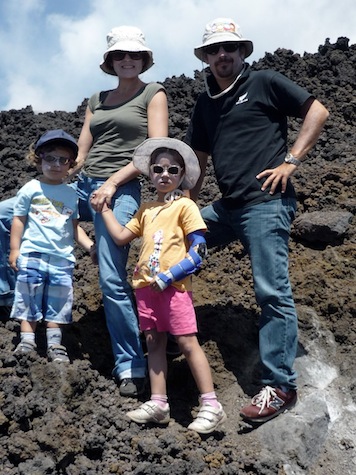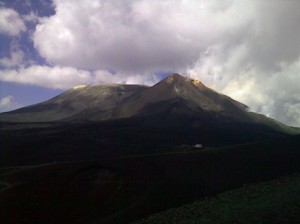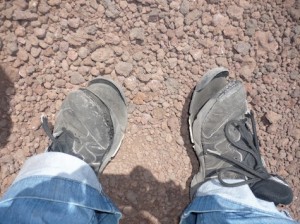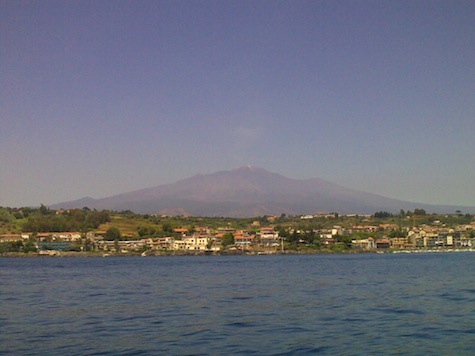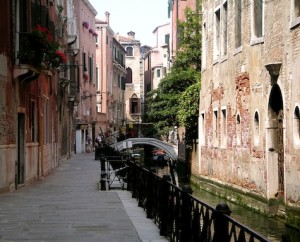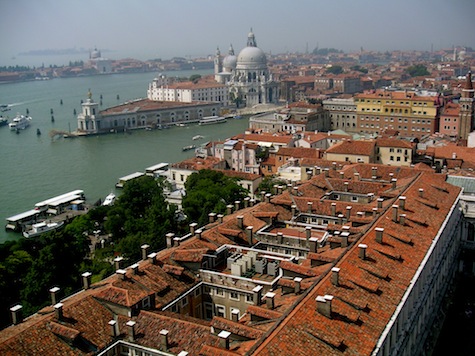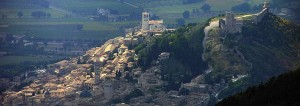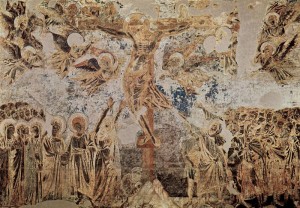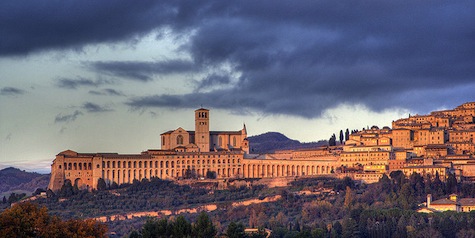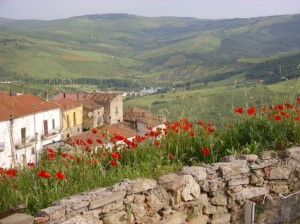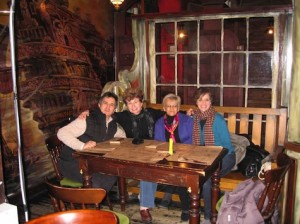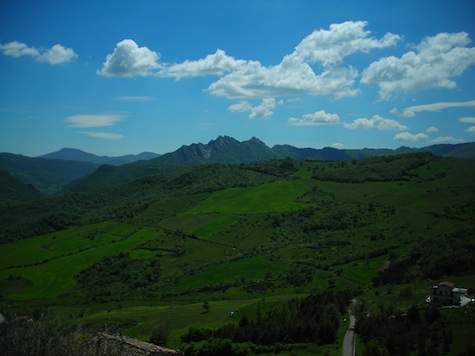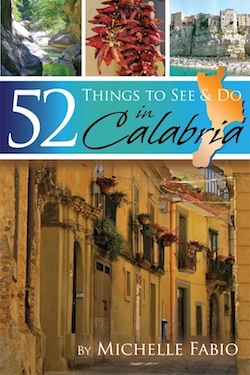Archive for 2010
Gita Italiana 2010: Salento — Not Your Typical Italy
 Today’s Gita Italiana stop takes us to the Salento courtesy of Tina Ferrari, who you can find at TinaFerrariTango.com. Welcome Tina!
Today’s Gita Italiana stop takes us to the Salento courtesy of Tina Ferrari, who you can find at TinaFerrariTango.com. Welcome Tina!
*
Sometimes I get so caught up in daily life that I have to stop, look around, pinch myself and realize where I’m living. The Salento is the sub peninsula that makes the “heel” if you are looking at a map of Italy.
It’s different than the rest of Italy. Every region has its own identity and traditions, but here in the south, the difference is pronounced. On one hand, it’s the Italy people dream of, untouched by mass tourism. Things are slow, shops close from 1:00 to 5 or 5:30 in the afternoon, people hit the streets of Lecce in bici, on their bicycles, green grocers can be found everywhere, and the gelato is just right. All the things you might fantasize about when thinking of Italy, you will probably find here.
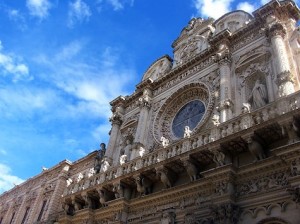
© Tina Ferrari
On the other hand, I feel like I’m in my own special place, removed from the rest of Italy. I think anyone in southern Italy, be it Calabria, Basilicata or Sicily, might feel the same way. Being at the bottom of the peninsula, the Salento is nice and isolated. It’s not the easiest to reach, and when you do finally get here, you feel like you are separated, in a way, from Italy. On the train along the Adriatic Coast, as soon as you pass Bari, your view out the window suddenly consists of red soil (with olive trees) muretti a secco (dry stone walls characteristic of this region), and the occasional trullo.
The Salento even has its own railway system: the Ferrovie del Sud Est! It’s truly a parallel universe. At the regular TrenItalia train station in Lecce, you’ll find chaos and grumpy employees, as you would at any station belonging to the national train network. But pop into a Ferrovie del Sud Est station in one of the neighboring Salento towns, and it’s a completely different set up. Complete tranquility. “Is the train for Lecce running?” you ask. The man at the biglietteria, calm as can be with glistening eyes, shrugs his shoulders, nods his head and says, “Sure.” You press further: “What time?” He nods his head again and answers, “Quando vuoi. When you want.” You move to the platform to wait for the train. The same man comes out and manually lowers a bar to block automobile traffic from crossing the tracks, and finally, a tiny toy train pulls up. Off you go.
On the other hand, it is also a region of progressive artists. Plenty of modern talent comes from the Salento, including musicians such as Dolcenera, i Bambini Latini and Sud Sound System. In Lecce, artisans sell their wares on the streets on summer evenings, and galleries abound with original, avant-garde creations by local artists.
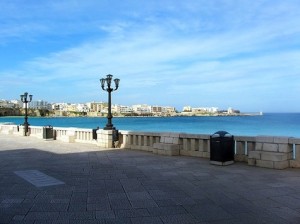
© Tina Ferrari
It’s strange to think that I am five hours from Rome on the train, but if I were to take my friend’s boat, I would get to Corfu (Greece) in only three. (In fact, there are a few towns near me where you’ll hear people speak Griko, a “modern” Greek spoken in the Magna Graecia region of Southern Italy, including the Salento.) It’s also strange to think that after all the time an American English speaker might spend learning to roll their r’s properly in order to pronounce Italian, if you want to speak Leccese, the American “r” is actually much better, at least when it follows a “t.”
Perhaps the language here is Italian, perhaps this region belongs to the republic of Italy, but once in a while I realize, as I walk through Lecce’s historic center in the morning, looking up at homes made of white-gold Leccese stone and the contrast against the Mediterranean blue sky, or as I make my way down the road on the way to Gallipoli, surrounded by oleanders and prickly pears, with the salty scent of the Ionian Sea in the air, that I am in a very special, truly unique Paradise in the south: the Salento.
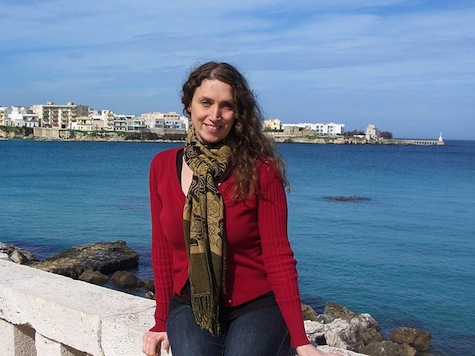
© Tina Ferrari
*
Tina Ferrari is an Italian-American tango dancer, translator and writer living in Lecce. You can find her at TinaFerrariTango.com.
*
Grazie mille Tina!
Tomorrow: a quick trip to Abruzzo.
Gita Italiana 2010: Sicily’s Mount Etna
 Our next Gita Italiana stop is just a ferry ride away from me in Sicily, but I’ve still never been to see Mount Etna in person. Giving us the goods on this hot spot (ha!) is none other than Alexia Murray of 2 Kids and a Dog — you remember the family with the hilarious calendar and YouTube videos? Welcome Alexia!
Our next Gita Italiana stop is just a ferry ride away from me in Sicily, but I’ve still never been to see Mount Etna in person. Giving us the goods on this hot spot (ha!) is none other than Alexia Murray of 2 Kids and a Dog — you remember the family with the hilarious calendar and YouTube videos? Welcome Alexia!
*
Our gita Italiana starts like this:
I’m brusquely awoken by something pounding on my belly. I open my eyes, and realize it is a small boy, an odious boy, who happens to be my son. He dashes off cackling and I catch sight of the clock. Darn! The alarm didn’t go off! We’re late! We gotta get out of bed and head up the mountain before (dramatic, scary music) the tourists get there!
As some of you know, my husband Nick is Sicilian and we always spend part of our summer in his hometown, Catania. One of our yearly day trips is visiting the Etna volcano, a massive active volcano standing 3,329 meters high that dominates the east coast of Sicily between Messina and Catania. The last eruption was in April of this year. In 2001, a crater even opened dangerously close to the town of Nicolosi. The worried townspeople brought out their Saint from the church and the lava stopped. A miracle!
“I’m going to need another miracle to get my family moving,” I think as I gaze across the bed and see Nick snoozing beside Luce, our 6 year-old daughter. Only 3 hours later we’re in the car, picnic packed, camera in tow and donning high-tech mountain gear (clothes from Nick’s prepubescent era).
Obviously, being “Catanese”, Nick does NOT consider himself a tourist, but a LOCAL, a gruff mountain man, bordering on volcano expert…even though he goes to the Etna once a year (using his satellite navigator) and doesn’t know the difference between magma and lava (do you?). As we snake up to the Etna (about 30 km from Catania), Nick grumbles that we’ll get to the cable-car station just as the bus loads of (scary music) tourists start swarming in. He pleads, “ let’s just go to the beach!” No way Jose, the kids demand to eat their salami sandwiches face to face with the mighty Etna.
Finally, we pull up to the “rifugio Sapienza” at 1910 meters. Nick’s mood changes (thank God) when he immediately finds a parking spot. A miracle, he announces. My day starts to look better. Pasty-faced with total sunscreen, we climb into our own private cable-car, the kids buzzing with adrenaline. Luce, the wise one of the family, inquires, “Mom, what happens if the volcano explodes now?” I laugh and reply, “don’t worry about it sweetie, it’s not going to happen…” But the question echoes in my head… “crap, what happens if the volcano really does explode, NOW?” I instantly file the thought into the “I can’t deal with that” section of my brain. The 15 minute cable-car ride flies by, apart from a brief episode when the gondola (no, not the ones in Venice!) suddenly stops and we dangle in thin air for what seems like an eternity. Liam jumps up exclaiming, “I need to go poo-poo,” making us lurch precariously. To avoid a panic attack, I spend the rest of the gondola ride on an astral voyage.
At 2500 meters, we roll out the plaid blanket and devour our picnic. I scoff at the (scary music) tourists, some in flip flops, struggling to walk over the jagged lava rocks, others with straw beach mats under their arms. I wonder, “what were they thinking when they decided to spend the day on the highest active volcano in Europe?” I gaze down at my feet, proud to be wearing my robust high-top sneakers. That lava ain’t got nothing on me in these.
The view is stunning from our picnic spot. We’re on top of the world. Everything around us is black, while Catania and the immense sea gleam below us. I can practically see all the way across Sicily, to the Madonie mountains where (more dramatic music) Corleone is… It’s amazing.
After lunch we get on a jeep-bus with gigantic wheels, a relic from some lunar expedition. The NASA-mobiles will take us up to 3000 meters to visit a small active crater! The kids tingle with anticipation. On the way up Luce eats three ham sandwiches, a banana, a zucchini omelet and belts out “Old McDonald” to the dismay of our fellow travelers. Liam, on the other hand…falls asleep. Nick is very pleased as he will have to carry Liam on his back like a donkey when we take our one-hour hike around the crater. Upon arriving, we are greeted by our guide, a REAL, although slightly elderly, mountain man with a thick Sicilian accent who occasionally utters a few words in French (in the same Sicilian accent). Do I look French, I wonder? I don’t know.
As I take my first step behind our guide I feel something strange on my foot. I realize that my sturdy, reliable high-tops are disintegrating. The soles are detaching and I’m going to kill myself on the top of a mountain in Sicily. So much for my high-tech gear, I might as well have worn flip flops. However, the situation is not so dismal as I soon figure out how to walk so the soles don’t catch on the craggy rocks. I know I look like I’m doing a Monty Python “silly walk,” but I hold my head up high, avoiding the (scary music) tourist’s curious gaze and focus on the incredible moon-scape around me. The top of the volcano looms above us, smoking enigmatically. When I put my hand on the ground it is warm, and when I dig a bit, it’s hot! Steam bellows out of the smaller crater below us and is whisked off by the wind. Oh, and by the way, it’s freezing. So, we take out our shiny, ’80’s triacetate-polyester tracksuit jackets and bundle up. Lookin’ good, feelin’ good.
By the time we walk all the way around the crater, Nick is cussing in Sicilian due to the sizable weight in his arms (Liam), not to mention the 4 liters of water he is carrying in his backpack. I am waddling like a neurologically damaged duck and Luce is getting reprimanded by the Sicilian guide (in French) for throwing rocks over the edge of the crater. Ah, just another day of our relaxing vacation… And we still have to get down the mountain…
But all in all, a great Italian gita.
*
Alexia Murray is an American mom living in Rome with her Sicilian husband (who claims to descend directly from the Druids), two vivacious kids and their dog Hamlet. Together they’ve created www.2kidsandadog.com, a site that hosts an ongoing comic web series, which thrice weekly reveals in short snippets what really happens to make their ridiculous yearly family calendar. Documenting the activities is a multi-tasking mom and a burnt-out pop, cooky costumes, home-made sets, an absurdly busy doorbell, a slow burning soup on the stove, surreptitious sibling rivalry, and a lot of barking.
All photos courtesy of Alexia Murray. Also, for a live shot of Mount Etna, check out the Mount Etna webcam.
*
Grazie mille Alexia and family!
Are you ready for some Puglian action? That’s where we’re headed tomorrow…
Gita Italiana 2010: Six Memories of Venice
 Today’s stop on the Gita Italiana takes us to Venice with Robin of My Mélange. Welcome Robin!
Today’s stop on the Gita Italiana takes us to Venice with Robin of My Mélange. Welcome Robin!
*
Venice will always hold the honor of being the first city I visited in Italy. One could say that Venice is partially responsible for my falling in love with Italy. It certainly started the ball rolling. I remember that magical moment as I caught my first glimpse of the Piazza San Marco in Venice from the Alilaguna as it sailed along the jade waters, on a bright, sunny day. It’s an indelible memory. One that I hold very dear.
But it isn’t the only memory I have of Venice. There are many. I thought I’d share six other things that I remember about Venice that put a smile on my face whenever I think of them. Hopefully they paint a vivid picture of what it’s like to spend time in one of the most unique cities in Italy.
1. Traversing the tiny footbridges and getting lost in the maze of calle, especially at night. Wandering with no particular place to go is one of the best ways to discover the real Venice.
2. The lovely gelato shop owner who not only had the best gelato, which we enjoyed no less than twice a day, but who holds the honor of being the very first Italian to ever say ‘Ciao‘ to me.
3. The manager of the tiny B&B where we stayed, who was a dead-ringer for Hank Azaria’s character, Agador (Spartacus), in the movie ‘The Bird Cage.’ He was delightful and each morning he served us warm cornetti filled with peach preserves alongside the best cappuccino, prepared with his tiny Bialetti.
4. Taking a mid-afternoon nap while listening to the beautiful sound of piano and violin wafting into the windows of our room, from the Music Conservatory across our canal.
5. The quiet. The lack of cars and scooters. I enjoyed hearing every footstep, every clip-clop of a stiletto heel. It was lovely being lulled to sleep every night by the sound of lapping water and the occasional boat that would slowly make its way passed our open window.
6. Our dinner at Ai Cugnai, a family joint, where the laundry dangled precariously above our heads and where the entertaining owner was more of a draw than the food. We watched her sip wine from other diners’ glasses and present dishes from the kitchen to everyone in the dining room before serving them. She spoke not a word of English and at the end of dinner, she pinched my cheeks and told me to call her mamma. Priceless!
*
Robin Locker Lacey is an Italy and France travel consultant, freelance travel writer and photographer who hopes to one day realize her dream of living La Dolce Vita in her beloved Italy. Her passion for European culture and lifestyle is featured on her site, My Mélange, which includes travel essays, photos, recipes, restaurant and hotel recommendations, ideas on how to live La Dolce Vita from abroad and travel tips–she is the self-professed Queen of the Carry-On bag and *will* convince you to convert. She is addicted to social media – you can follow her on Twitter @MyMelange.
*
Grazie mille Robin!
Domani . . . Mount Etna in Sicilia!
Gita Italiana 2010: How to Really Love Assisi
 Welcome back to another day on the Gita Italiana — do you need a rest yet? Sorry, you won’t be getting one until August is over!
Welcome back to another day on the Gita Italiana — do you need a rest yet? Sorry, you won’t be getting one until August is over!
Today we’re spending time getting to know and love Assisi with Rebecca Winke of Rebecca’s Ruminations; you may also know her as one of the driving forces behind the Agriturismo Brigolante in Umbria. Welcome Rebecca!
*
There’s a tipping point on the eternal scale of love.
At the beginning, you fall for the love of your life for the big things—her eyes, her smile, the way she walks—in short, those same things that have smitten every guy who has come before you and are still what make heads turn. But slowly, over time, your focus shifts and at a certain point you realize that what you love about her now are the little things, details so small and intimate that you feel like you, and only you, know. The way she looks sad when she talks about her grandfather, how she bites her lip when she’s nervous, her secret stash of Phil Collins albums. And though she may be admired the world over for the big things, it’s those little ones that make her yours.
This is where I’m at with Assisi. Years ago I fell in love with her for the big things—the Basilica of Saint Francis, the winding alleys lined with pink stone houses, the pretty piazza—all of those things that have struck visitors for centuries before me.
But now, after almost 20 years of living here, I love her for the small things, my private collection of quirks that makes me feel like we belong together.
Her Checkered Past
Sure, your woman is a staid mater familias now, admired for her domestic organization, professionalism, and civic activism. But you know. You know she shies away from tank tops and sundresses because of that tattoo on her shoulder, the one she now finds tacky and slightly embarrassing, but which is the only remaining evidence of a ten-month long teen rebellion that involved quitting school, thumbing it to California, hooking up with a ne’er-do-well group of hemp activists, and finally having to call collect from a biker jamboree in one of the Dakotas for money to fly home and shower. And you love that tattoo.
Assisi is all peace and love and Saint Francis now. But I know. I know her past as a scrappy little warmonger, wreaking havoc in neighboring Perugia and Arezzo and taking up arms at the drop of a hat (for better or for worse) against Rome, the Byzantine empire, and the Lombards (amongst others). Today, Assisi is admired for her Basilica (the one dedicated to Saint Francis who was, before his religious conversion, a fierce merchant-warrior who survived numerous battles and captivity), but I love to visit one of the only vestiges of her bellicose past: the captivating and dramatic Rocca Maggiore, her stone fortress set above the town. I wander through the semi-restored tunnels and turrets, and climb the far tower to gaze over the whole of the Umbrian valley with a conquerer’s eye. I know.
Her Chipped Tooth
Everyone loves her smile because it’s perfect; you love it because you know it’s not.
Whenever I visit the Basilica, I always stop to admire the famous fresco cycle in the upper church documenting the life of Saint Francis, with its breathtaking first steps towards conveying depth and perfect rendering of facial features. But what I spend most my time in front of is Cimabue’s magnificent Crucifixion decorating the apse, with St. Francis on his knees at the foot of the Cross. Because the artist used lead oxide in his colours, which were applied when the plaster was no longer fresh, the frescoes soon suffered from damp and decay and deteriorated to photographic negatives. Somehow seeing a great master’s “Doh!” moment makes all the perfection just a little more human and lovable.
What’s Really Important to Her
You’ve heard her hold forth at dinner parties about travel, food, wine, shopping, and all six seasons of SATC. But you’ve also listened to her read pages from her diary out loud to you in bed. You know what she would run back into the burning house to save.
Assisi has shops, restaurants, music and arts festivals, religious feast days, nattily dressed inhabitants, and many, many cell phones. But if you really want to see what makes this town tick, take the pretty walk past Porta San Giacomo to the cemetary. Aside from being architecturally lovely in that way that old monumental European cemetaries so often are, here you will discover the soul of Assisi. Notice the names on the stones that repeat over and over, as generations live out their lives in this small town. See the carefully tended graves, as women return every week to freshen flowers and polish marble. Watch as they tenderly touch the portraits attached to the graves and quietly greet their loved ones. Assisi would run back into the burning house to save her family.
How She Sleeps
Nothing is more intimate than looking down on your love’s face while she sleeps, and, indeed, the winter months when the tourists have left and Assisi seems to have fallen into quiet repose is when I feel closest to her. I wander her silent streets on a misty February night, hear the echo of my footsteps, discover alleys and winding staircases, and have only the occasional cat or church bell tolling as company. Everyone loves her when she’s awake and vibrant in the sunshine; I love her when she’s all shuttered up in the fog.
She Can Still Dazzle You
Yes, you are over the big stuff. But every once in awhile she comes down the stairs dressed for an evening out and manages to leave you breathless and head-over-heels in love again.
I see Assisi every day. I admit I get inured to her beauty after awhile. And then there will be that one magical fall evening when I’m headed up the hill and the light is just the right shade of dusk to set the whole town ablaze in pink and orange and the sky is an improbable azure and the mountain she perches on is an autumn firestorm and the air is so limpid that you can see every detail to postcard perfection and I am so smitten that I pull the car over and put my life on hold for ten minutes to watch my beautiful Assisi in all her glory. And I think, “It’s you and me, baby. We’re in it for the long haul.”
*
Rebecca moved to Italy from Chicago in 1993 and shortly thereafter opened an agriturismo in her husband’s renovated family farmhouse at the foot of Mount Subasio near Assisi, Umbria. She spends her time taking care of guests at Brigolante, blogging about the lovely region she now calls home at Rebecca’s Ruminations, and wondering about what strange winds blew an urban vegetarian to a pig farm in Umbria.
Gita Italiana 2010: At Home in Basilicata – The Forgotten Region
 Next stop on the Gita Italiana is Calabria’s neighbor to the north, Basilicata, thanks to Valerie Schneider of 2 Baci in a Pinon Tree. Welcome Valerie!
Next stop on the Gita Italiana is Calabria’s neighbor to the north, Basilicata, thanks to Valerie Schneider of 2 Baci in a Pinon Tree. Welcome Valerie!
*
When I tell people that I bought a house in Italy, the usual response is, “How fantastic! When I tell them it’s located in Basilicata, they get a blank look and say, “Where?”
Basilicata is possibly the least-known region in the peninsula. It is cuddled between Puglia, Calabria and Campania and is the most sparsely populated part of the country. Its ancient name is Lucania, and while it’s been renamed Basilicata, the inhabitants are still known as Lucani.
Little is written about the region, and what is published generally refers to it as “poverty-stricken” or “backwards.” Basilicata is misunderstood, underappreciated and overlooked.
Even among Italians it isn’t well-known.
Our first trip south was to explore my family heritage. We arrived in a remote mountain village expecting to find squalor based on the only English-language descriptions I could find at the time, but met instead with a well-kept town that clung desperately to its rocky peak. We meandered the insanely-steep streets and were greeted with smiles and stares. We discovered I still had familial ties there.
Those first forays into the Motherland garner us outright stares. Let’s face it, a little town of 2,000 souls that is perched on top of a mountainside at 1,000 meters surrounded by rural farms and sheep in southern Italy does not draw many Italian tourists, much less foreigners. We quickly came to realize that behind their curious smiles was a real desire to assist and a strong pride in their towns and traditions. Several trips and many wonderful, welcoming experiences tied up our heart-strings with a bow.
The more we explored Basilicata the more we were smitten. The natural beauty and the genuine warmth of the people completely won us over.
While she dips two toes into two seas, Basilicata does not embody the typical Mediterranean image one may have of Italy. The landscape is rocky and rugged, even primitive. It has a unique and raw beauty. From the plains of Puglia the earth turns wavy with billowing wheat. Then it ascends to rolling hills punctuated with olive groves and grape vines, where world-class wine is made from ancient Grecian grapes. Time-worn villages cling to ridges and hilltops. From there the region soars upwards into alpine mountains ribboned with rivers and sliced with gorges. In the high altitude the air is clear and millions of stars cast an amazing display. Butterflies dance in the sun, and eagles and falcons guard the skies. And the Lucani welcome visitors with curious glances and open smiles.
We knew we would always return to this fascinating, beautiful land, so it just made sense to buy a small place that we could call our own. Our little casa, at about 300-years old, has more time on it than our New World country.
Guidebooks call it poverty-stricken but we found there is a very rich culture there. They say it’s backwards, but we say it just clings to time-honored traditions. We love walking the medieval stone streets and feeling surrounded by hundreds of years of history and simplicity. Our neighbors have accepted us as ordinary villagers, we’ve made friends — we feel at home. And there is nothing backwards about that.
*
Valerie Schneider is a freelance writer and travel professional, a cappuccino addict, and a Lucana at heart. She writes about off-the-beaten-path Italy on the Web site, Italy Panorama. You can read more of her adventures at her blog, 2 Baci in a Pinon Tree.
*
Grazie mille Valerie!
Be sure to come back for tomorrow’s gita to Assisi!

